2,4-DIHYDROXY-6-METHYLBENZOIC ACID
- CAS NO.:480-64-8
- Empirical Formula: C8H8O4
- Molecular Weight: 168.15
- MDL number: MFCD00210536
- SAFETY DATA SHEET (SDS)
- Update Date: 2024-11-19 23:02:33
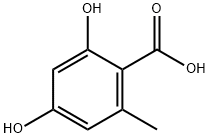
What is 2,4-DIHYDROXY-6-METHYLBENZOIC ACID?
Description
Orsellinic acid is a fungal metabolite and benzoic acid derivative with antioxidant and neuroprotective activities. It scavenges 2,2-diphenyl-1-picrylhydrazyl (DPPH; ) radicals with an IC50 value of 5 mM. Orsellinic acid (1 μg/ml) prevents PARP cleavage induced by platelet-activating factor (PAF) in PC12-AC cells and PAF-induced cytotoxicity in PAF receptor null (Pafr-/-) mouse cerebellar granule cells.
The Uses of 2,4-DIHYDROXY-6-METHYLBENZOIC ACID
Orsellinic acid is a benzoic acid compound shown to block PAF-mediated neuronal apoptosis.
What are the applications of Application
Orsellinic acid is a benzoic acid compound shown to block PAF-mediated neuronal apoptosis
Definition
ChEBI: A dihydroxybenzoic acid that is 2,4-dihydroxybenzoic acid in which the hydrogen at position 6 is replaced by a methyl group.
Biosynthesis
One of the simplest polyketide derivatives, orsellinic acid is widely distributed in fungi. It is biosynthesised from an acetate starter unit and three malonyl units, as shown in Figure. Intramolecular condensation of the polyketide chain gives orsellinic acid without further modification.
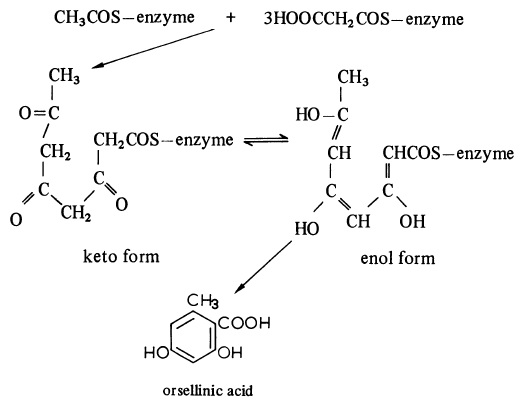
The biosynthesis of orsellinic acid.
Synthesis Reference(s)
The Journal of Organic Chemistry, 30, p. 3566, 1965 DOI: 10.1021/jo01021a507
Properties of 2,4-DIHYDROXY-6-METHYLBENZOIC ACID
| Melting point: | 173-174°C |
| Boiling point: | 257.07°C (rough estimate) |
| Density | 1.3037 (rough estimate) |
| refractive index | 1.5090 (estimate) |
| storage temp. | Sealed in dry,Room Temperature |
| solubility | Ethyl Acetate (Slightly), Methanol (Slightly) |
| form | Solid |
| pka | pK (25°) 3.90 |
| color | White to Pale Gray |
| Water Solubility | Soluble in water, dimethyl sulfoxide or 100% ethanol. |
| Stability: | Hygroscopic |
| CAS DataBase Reference | 480-64-8 |
Safety information for 2,4-DIHYDROXY-6-METHYLBENZOIC ACID
| Signal word | Warning |
| Pictogram(s) |
 Exclamation Mark Irritant GHS07 |
| GHS Hazard Statements |
H315:Skin corrosion/irritation H319:Serious eye damage/eye irritation H335:Specific target organ toxicity, single exposure;Respiratory tract irritation |
| Precautionary Statement Codes |
P261:Avoid breathing dust/fume/gas/mist/vapours/spray. P304+P340:IF INHALED: Remove victim to fresh air and Keep at rest in a position comfortable for breathing. P305+P351+P338:IF IN EYES: Rinse cautiously with water for several minutes. Remove contact lenses, if present and easy to do. Continuerinsing. P405:Store locked up. |
Computed Descriptors for 2,4-DIHYDROXY-6-METHYLBENZOIC ACID
2,4-DIHYDROXY-6-METHYLBENZOIC ACID manufacturer
GRK RESEARCH LABORATORIES PVT LTD
New Products
3-Iodophenylacetic acid 3-Pyridineacetonitrile, α-hydroxy- 2-Propanamine, 1-chloro-, hydrochloride (9CI) 3-(hexyloxy)-4-(pyridin-3-yl)-1,2,5-thiadiazole 2-Hexyn-1-ol Dibenzo-18-crown-6 Nickel(II) perchlorate hexahydrate, 98% 4-Bromophenylacetonitrile, 95% 3-Bromo-4-fluoroaniline, 97% Sodium tetraborate decahydrate, 98% Palladium(II) acetate, trimer, Pd 99% 4-Bromo-2-chlorotoluene, 97% N N Dimethylformamide Dimethyl Acetal (Dmf Dma) 2,3-Dichloro Benzoyl Cyanide [Side Chain] Bis(2-Chloroethyl) Amine Hydrochloride L-Glutamic Acid Diethyl Ester Hydrochloride 5-(Difluoromethoxy)-2-Mercaptobenzimidazole 1-Ethyl-3-(3-Dimethylaminopropyl)-Carbodiimide Hydrochloride [EDC Hcl] 1,4-Napthoquinone Bromoiodomethane Sodium Bicarbonate Methylene Dichloride (MDC) Ethyl Acetate Indole-3-Carbinol (I3C)Related products of tetrahydrofuran
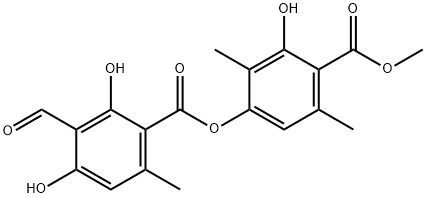
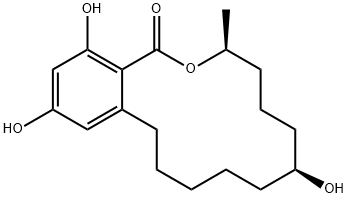

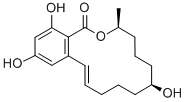
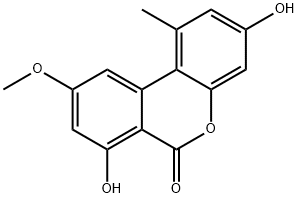
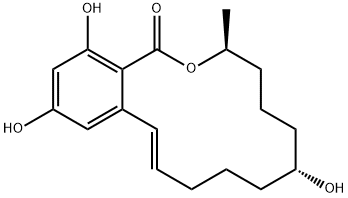
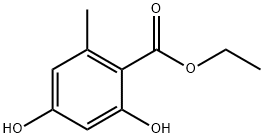
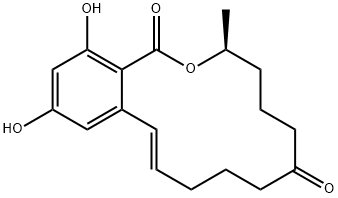
You may like
-
 2,4-Dihydroxy-6-methylbenzoic acid 480-64-8 98%+View Details
2,4-Dihydroxy-6-methylbenzoic acid 480-64-8 98%+View Details
480-64-8 -
 17604-74-9 3-Pyridineacetonitrile, α-hydroxy- 98+View Details
17604-74-9 3-Pyridineacetonitrile, α-hydroxy- 98+View Details
17604-74-9 -
 131987-69-4 98+View Details
131987-69-4 98+View Details
131987-69-4 -
 Cyclohexane, (2-propynyloxy)- 67967-07-1 98+View Details
Cyclohexane, (2-propynyloxy)- 67967-07-1 98+View Details
67967-07-1 -
 764-60-3 2-Hexyn-1-ol 98+View Details
764-60-3 2-Hexyn-1-ol 98+View Details
764-60-3 -
 2-Propanamine, 1-chloro-, hydrochloride (9CI) 98+View Details
2-Propanamine, 1-chloro-, hydrochloride (9CI) 98+View Details
5968-21-8 -
 3-Iodophenylacetic acid 1878-69-9 98+View Details
3-Iodophenylacetic acid 1878-69-9 98+View Details
1878-69-9 -
 132945-75-6 (S)-1-Boc-3-methanesulfonyloxy-pyrrolidine 98+View Details
132945-75-6 (S)-1-Boc-3-methanesulfonyloxy-pyrrolidine 98+View Details
132945-75-6
